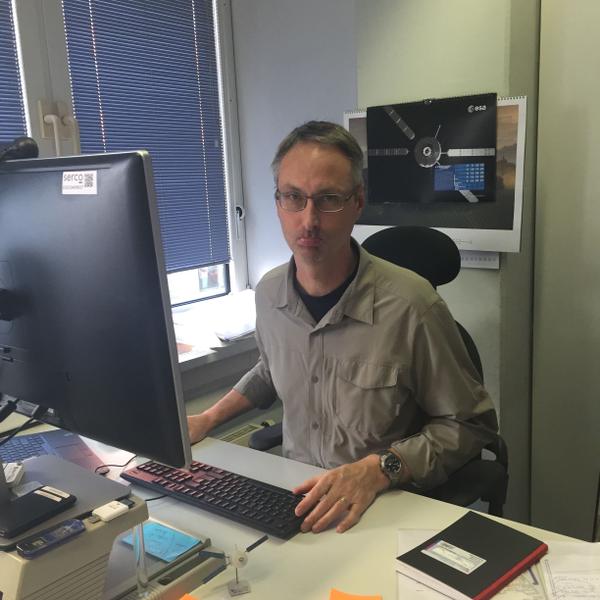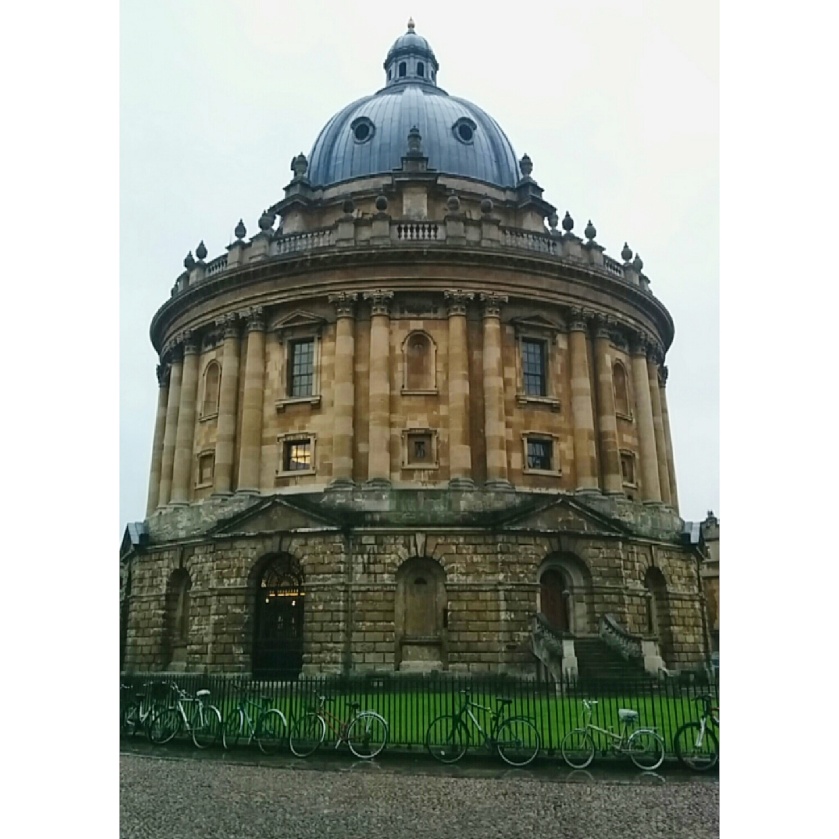I recently interviewed EJR-Quartz colleague Daniel Scuka to discuss the field of science blogging. Daniel works as Senior Editor for Spacecraft Operations at ESOC, ESA’s Space Operations Centre in Germany. He had a wealth of information and advice to share on the best ways to blog, why it is a wonderful method of communication and also mentioned the challenges he has faced when blogging for science.

A sad Daniel on his last day blogging for ATV. (Credit: @AndreasSchepers )
Daniel has been writing on the dedicated blog for ESA’s Automated Transfer Vehicle (ATV) series of missions since 2007. Responsible for delivering cargo and reboosting the International Space Station (ISS) in orbit, the last ATV re-entered Earth’s atmosphere on 15th February 2015.
So Daniel, what exactly is ATV used for?
First of all, the ATV vessels are used to deliver cargo and supplies to the International Space Station. An ATV docks for about five or six months, comprising the so-called attached phase. There’s dry cargo that is carried inside the cargo compartment, including food, clothing, supplies and equipment for experiments on board the ISS. It also supplies wet goods, which is fuel, air, oxygen, gases, nitrogen, water and as all of that gets delivered to the ISS, garbage and waste gets loaded onto the ATV. So, when it undocks it takes all of this off the Station and it burns up in the atmosphere.
ATV has a thruster system so it can reboost the Station which naturally steadily decays with each orbit. Furthermore, it can be used to provide debris avoidance manoeuvres when any space debris are predicted to come too close — then the ATV’s thrusters can be used to either raise or lower its orbit avoid whatever piece of debris is coming over. That’s ATV in a nutshell.
What’s so special about this particular ATV, ATV-5?
When ATV-5 was launched last July, it was the heaviest payload ever put in space by

ATV5 re-entry coincided with Valentines weekend. A lovely way to say goodbye don’t you think?
(ESA)
Europe (weighing in with a mass of 20,245 kilograms). It’s interesting that the last of the five ATV vessels ended up being the biggest and the baddest.
What are the challenges of communicating technical topics to a general audience?
Well, knowing who your audience is, is rather important and you absolutely have to accept the fact that you will never satisfy your entire audience all the time because the audience for this kind of information or for what ESA does with space is so diverse.
Secondly – there’s a whole range of requirements to be satisfied there in the sense of knowing who is actually the right person to provide that kind of information. Therefore, as the blog editor, you’ve got to make sure that when you’re getting information, you then turn around and publish it in the right way: don’t quote the junior engineer working on the ATV propulsion system about the value of why the ISS flies at all. Conversely, a high-level programme manager may not know the details of how the propulsion system works, so maintaining contact with those working-level engineers can be pretty valuable. I don’t think that this is unique to ESA and it’s not a bad thing either. If you do want to quote about the value of flying ATV or Europe participating in the ISS, go to the source.
The third challenge has been technical because when we started off our blog, it was literally sitting on a server underneath somebody’s desk. It crashed a lot and it took a long time to get the technology right. Now it’s finally properly hosted and properly
backed up. Now the only time it occasionally crashes is when it gets overwhelmed by NASA retweeting one of our posts such as this one – How many calories does it take to bring a calorie to the ISS?
Can you give any tips or advice on blogging for aspiring and practising science communicators out there?
1. Get your facts right. Be humble when it’s pointed out to you that you have got them wrong.
2. Understand your audience as best as you can and adapt how and what you write or publish to match your audience. Be dynamic, don’t just simply follow some kind of monolithic style that you think is the right style on Day 1, adapt your style over time because you’ll find that your audience is never monolithic.
3. Know your topic, know your domain. If you’re doing science communications, you’re talking about some specific domain. Find out who’s not providing some needed information and that’s where you’re really going to prove valuable.
One last question, what is your favourite ATV vessel?
I guess the first one and that’s because there was no way to test the ATVs in-flight prior to the actual ATV-1’s launch. Every single line of code, every single mission activity, every single button that was pressed at ATV-CC was monitored by NASA and Russia to ensure that ATV was safe and that the ATV Control Centre team – staffed by ESA and CNES, the French space agency – knew their stuff. I think in retrospect that it was the most impressive vessel in the series because it put the ATV design through everything it could do then and since then, they’ve all performed flawlessly and they’ve all done what they were meant to do. So ATV-1 was probably the most impressive and my favourite. Also, the ATV-1 mission was our first intro into blogging and our learning curve was certainly the steepest so that has given me lots of fond memories.

A screenshot of the official ESA dedicated ATV blog updated by Daniel and other editors on the science and stories of ATV since 2007. (http://blogs.esa.int/atv/)
So there you have it! An insight into the world of science blogging from an expert who has spent almost a decade communicating the wonders of ATV in blog form. Blogs are definitely here to stay, it seems 🙂
-Nikita
An edited version of this article originally appeared online at EJR-Quartz.
52.164428
4.491196


























